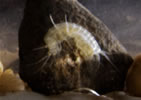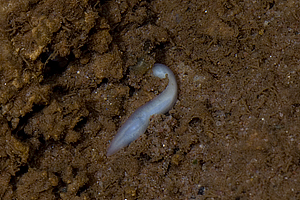 |
Cave Life of Devon |
 |
| |
| HOME |
| INTRODUCTION |
| LIFE IN THE ENTRANCE |
| LIFE IN THE CAVE |
| CONSERVATION |
| GLOSSARY |
| ACKNOWLEDGEMENTS |
| Bacteria |
| Fungi |
| Plants, Algae & Protozoans |
| Flatworms |
| Eelworms & Segmented Worms |
| Slugs & Snails |
| Crustacea |
| Insects |
| Spiders & Millipedes |
| Fish & Amphibians |
| Birds |
| Bats |
| Fossils and archeology |
| |
Flatworms |
||||
Flatworms are simple white or brown flattened worms and move about their damp habitat by a series of undulations. Most flatworms are free-living and predatory, but many are parasitic. Although simple they have a bilateral nervous system and the head end of some species even has a rudimentary brain to integrate signals from eyespots. Some have the ability to continue to grow as two flatworms when cut in half - the bit that had the tail grows a new tail and its tail becomes the head.
Other species include Polycelis felina and Dendrocoeleum lacteum which have been recorded from caves elsewhere in the country and are common in surface watercourses throughout the county. So far they have not been recorded from any of the caves in Devon, possibly due to the scarcity of stream passage. Several small white species of the Microturbellaria can sometimes be seen in small, muddy pools near the entrance of various caves, including Napp’s Cave, Pridhamsleigh Cavern and Reed’s Cave.
|
